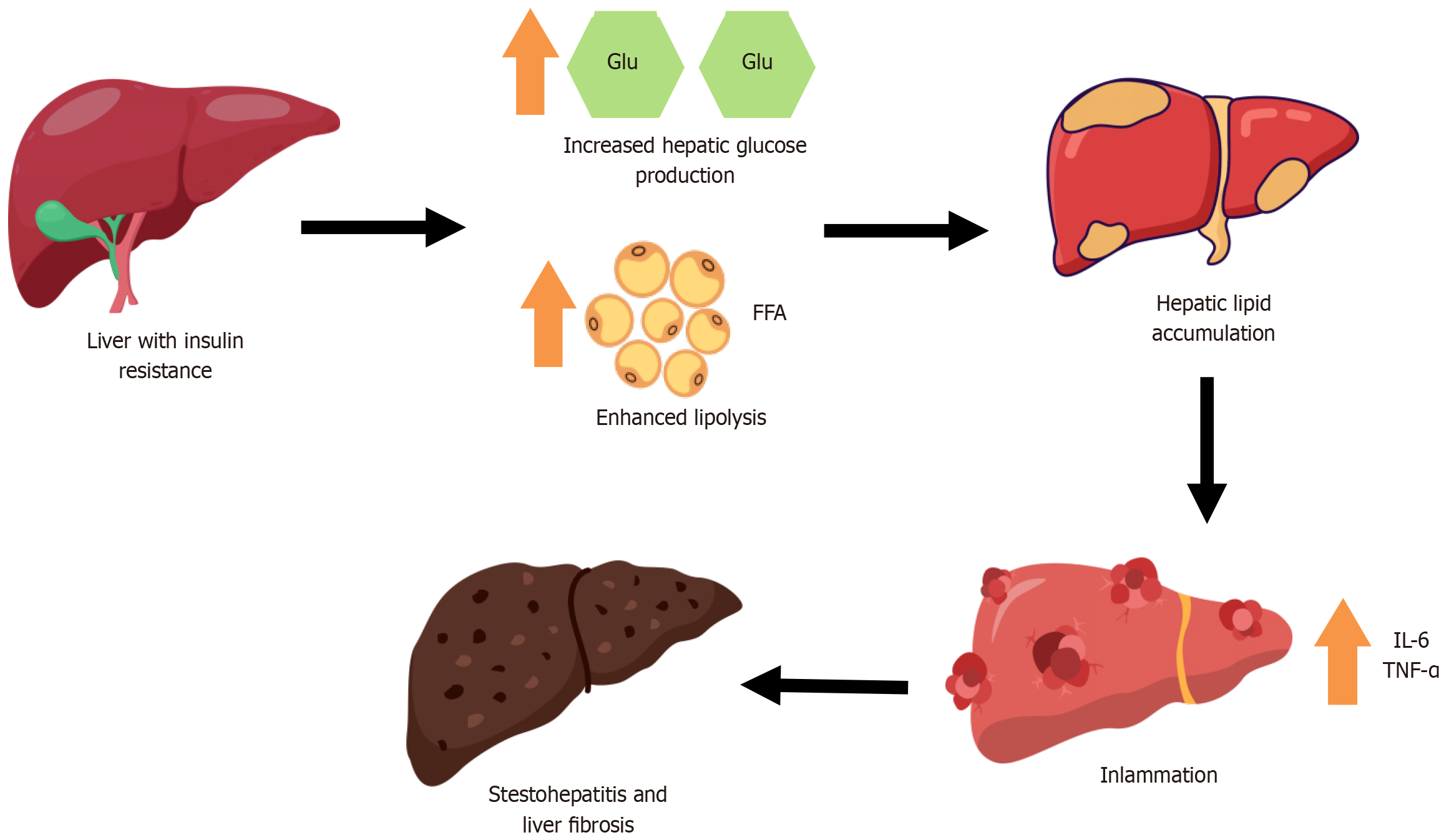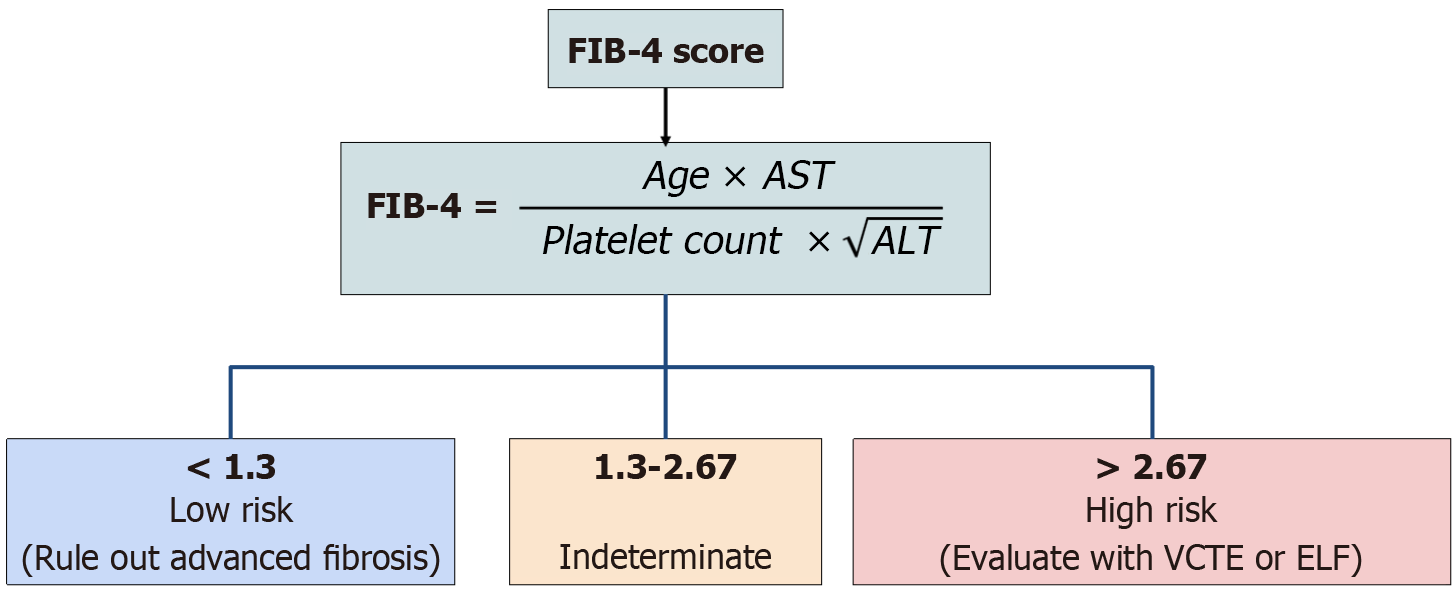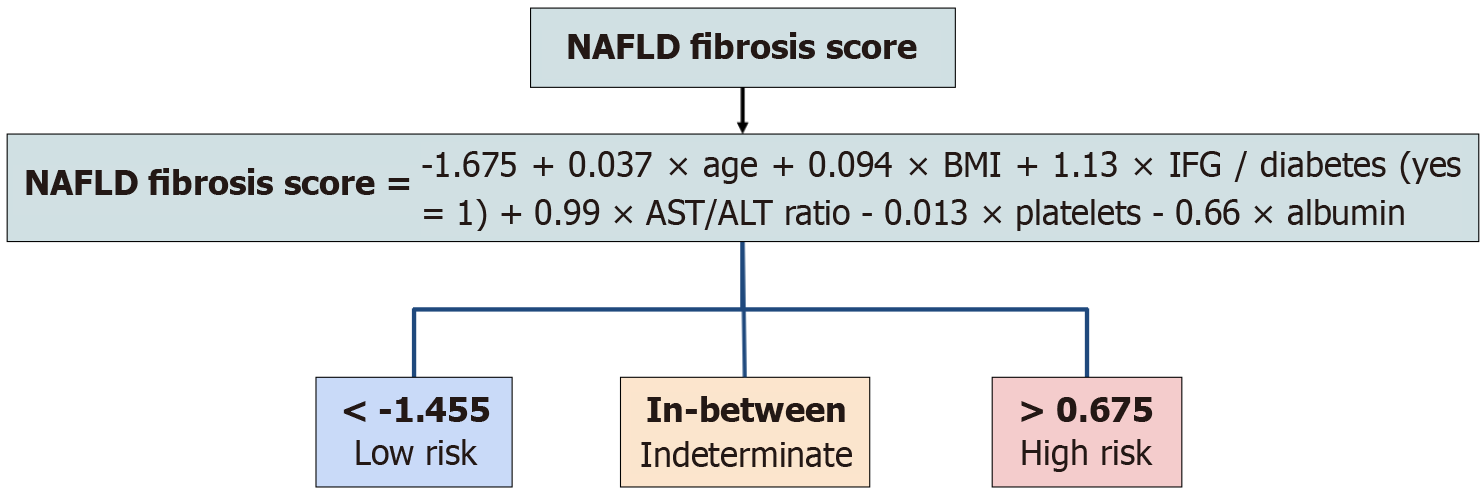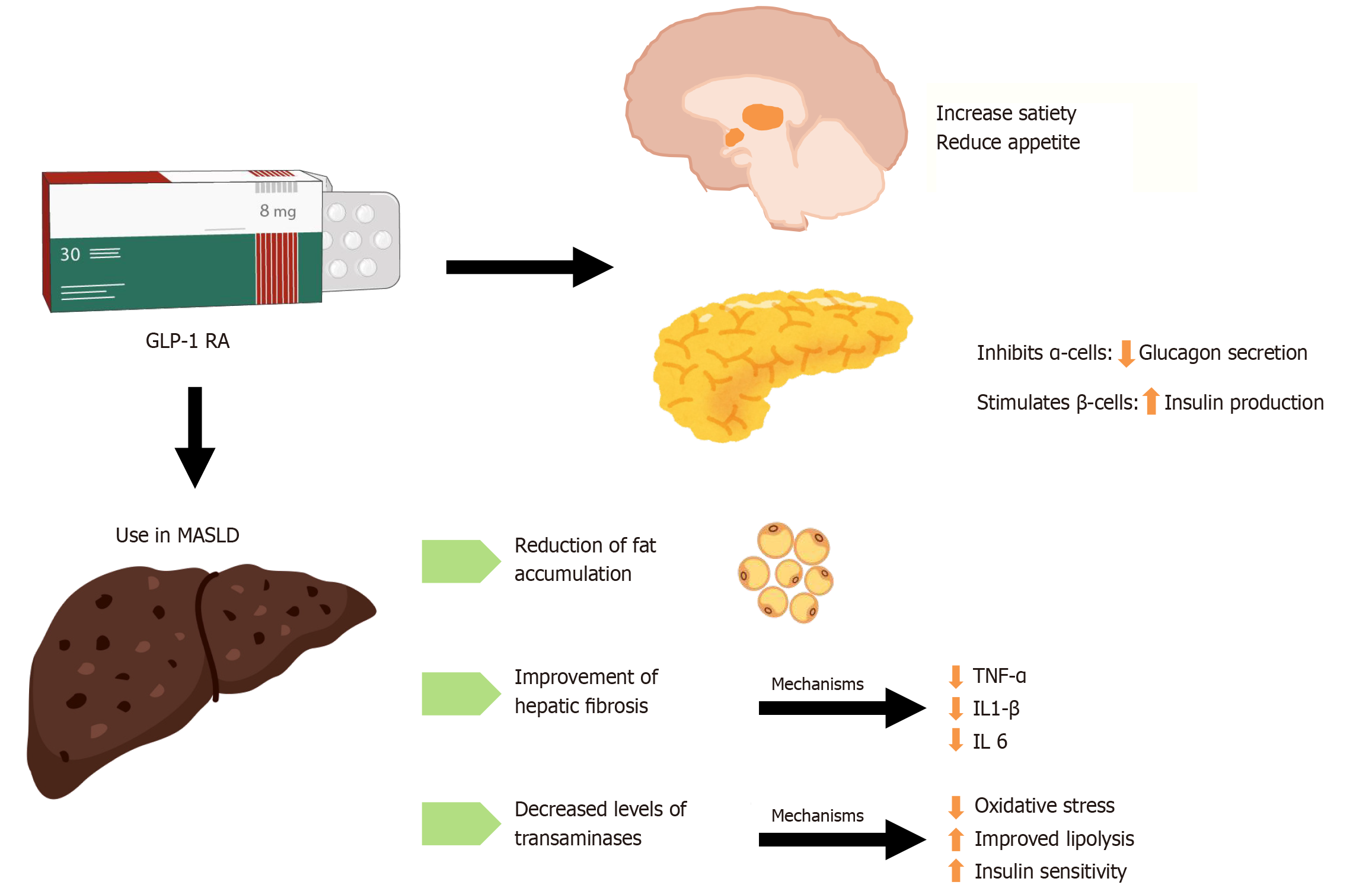Copyright
©The Author(s) 2025.
World J Gastroenterol. Oct 7, 2025; 31(37): 111435
Published online Oct 7, 2025. doi: 10.3748/wjg.v31.i37.111435
Published online Oct 7, 2025. doi: 10.3748/wjg.v31.i37.111435
Figure 1 Mechanisms of obesity and liver disease.
Insulin resistance leads to elevated free fatty acids, hepatic lipid accumulation, oxidative stress, and inflammation. These processes activate hepatic stellate cells and promote liver fibrosis. Image adapted from Servier Medical ART (https://smart.servier.com/), licensed under CC BY 4.0 (https://creativecommons.org/Licenses/by/4.0/). Glu: Glucose; FFA: Free fatty acids; IL: Interleukin; TNF: Tumor necrosis factor.
Figure 2 Fibrosis-4 score: Components and interpretation flowchart.
Flowchart illustrating the calculation and interpretation of the fibrosis-4 score, a non-invasive marker for advanced fibrosis in metabolic dysfunction-associated steatotic liver disease. The formula incorporates age, aspartate aminotransferase, alanine aminotransferase, and platelet count. Cut-off values are stratified to classify risk: < 1.3 indicates low risk, 1.3-2.67 is indeterminate, and > 2.67 suggests high risk, warranting further evaluation with vibration-controlled transient elastography or enhanced liver fibrosis testing. FIB-4: Fibrosis-4; AST: Aspartate aminotransferase; ALT: Alanine aminotransferase; VCTE: Vibration-controlled transient elastography; ELF: Enhanced liver fibrosis.
Figure 3 Non-alcoholic fatty liver disease fibrosis score: Components and interpretation flowchart.
Flowchart summarizing the non-alcoholic fatty liver disease fibrosis score, which incorporates age, body mass index, fasting glucose or diabetes status, aspartate aminotransferase/alanine aminotransferase ratio, platelet count, and serum albumin. This tool stratifies patients by fibrosis risk: Values < -1.455 suggest low risk, > 0.675 indicate high risk, and intermediate values require further evaluation. The non-alcoholic fatty liver disease fibrosis score is widely used for non-invasive fibrosis screening in metabolic dysfunction-associated steatotic liver disease, especially in primary care. NAFLD: Non-alcoholic fatty liver disease; BMI: Body mass index; IFG: Impaired fasting glucose; AST: Aspartate aminotransferase; ALT: Alanine aminotransferase.
Figure 4 Mechanisms of action of glucagon-like peptide-1 receptor agonists.
Glucagon-like peptide-1 receptor agonists exert their effects by acting on the hypothalamus to increase satiety and reduce appetite, delaying gastric emptying, stimulating insulin secretion from pancreatic β-cells, and suppressing glucagon release from α-cells. These mechanisms contribute to improved glycemic control and reduced hepatic steatosis. Image adapted from Servier Medical ART (https://smart.servier.com/), licensed under CC BY 4.0 (https://creativecommons.org/Licenses/by/4.0/). GLP-1 RA: Glucagon-like peptide-1 receptor agonists; MASLD: Metabolic dysfunction-associated steatotic liver disease; TNF: Tumor necrosis factor; IL: Interleukin.
- Citation: Concepción-Zavaleta MJ, Fuentes-Mendoza JM, Gonzáles-Yovera JG, Ruvalcaba-Barbosa GY, Cura-Rodríguez LD, González-Rodríguez JS, Concepción-Urteaga LA, Pérez-Reyes AI, Quiroz-Aldave JE, Paz-Ibarra J. Efficacy and safety of anti-obesity drugs in metabolic dysfunction-associated steatotic liver disease: An updated review. World J Gastroenterol 2025; 31(37): 111435
- URL: https://www.wjgnet.com/1007-9327/full/v31/i37/111435.htm
- DOI: https://dx.doi.org/10.3748/wjg.v31.i37.111435
















